This soft and light Pita Bread is made from whole wheat flour and also has the trademark pita pocket perfect for stuffing with tahini, Hummus, Falafel or anything else you’d like! One of the easiest breads to make, it is also versatile and can be used for so much more than a pocket to put yummy things in. You can toast it to make pita chips or even use it flat to make a quick and easy pita pizza.
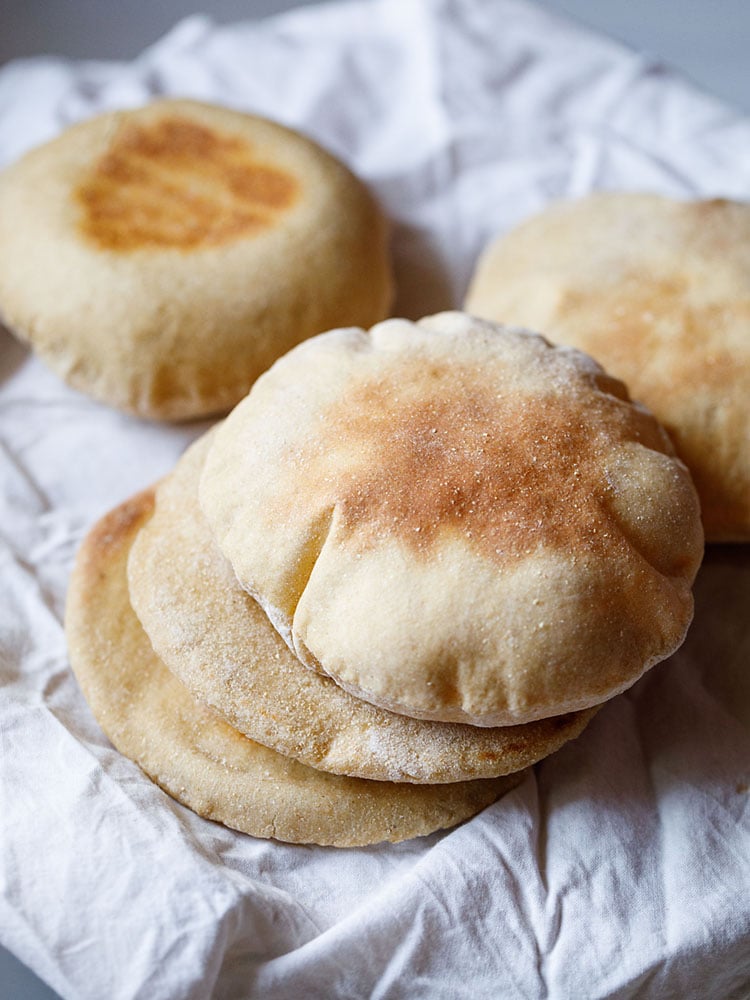
About This Pita Bread Recipe
Pita bread is a middle eastern flat bread that puffs up when baked creating an air pocket in the middle. As it cools, it deflates and flattens, but the pocket remains. Then, when you cut it in half, each half has its own pocket.
The first time I made pita bread was on the stovetop and I was so thrilled seeing the bread puffing up. Then later I started making pita bread in the oven and found that this caused it to puff up even further.
The oven baking method also works better because it prevents the bread from getting too browned as it does when making it on a skillet or frying pan.
However, I do allow it to get slightly browned in the oven as well because I prefer my bread well baked.
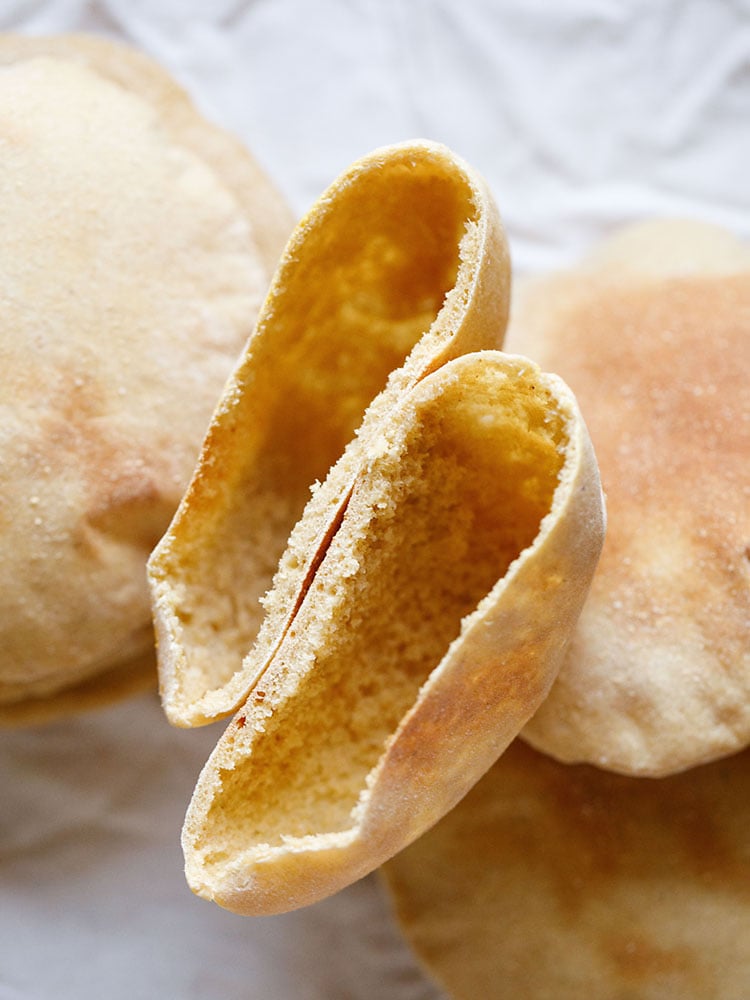
This pita bread recipe is adapted from one of my favorite bread books “The Bread Bible: 300 Favorite Recipes”, by Beth Hensperger. I can tell you from plenty of experience that this is the best recipe for making pita bread.
Once you have baked your homemade pita you can get creative and come up with different sandwich combinations and fillings.
Falafel is always a classic filling, but you really can put anything you like into it. Any type of mixed salad and dressing works well as the pita allows the taste of the salad to come through while making the meal more filling.
For a more authentic Indian or Middle Eastern experience, stuff your pita bread with some spiced sautéed veggies or potatoes or a dry Chana Masala.
Add some onion rings, tomato slices and mint chutney plus tamarind chutney. Or make some Veg Kebab or fried Vegetable Cutlet and add some classic Indian chutneys. So many options!
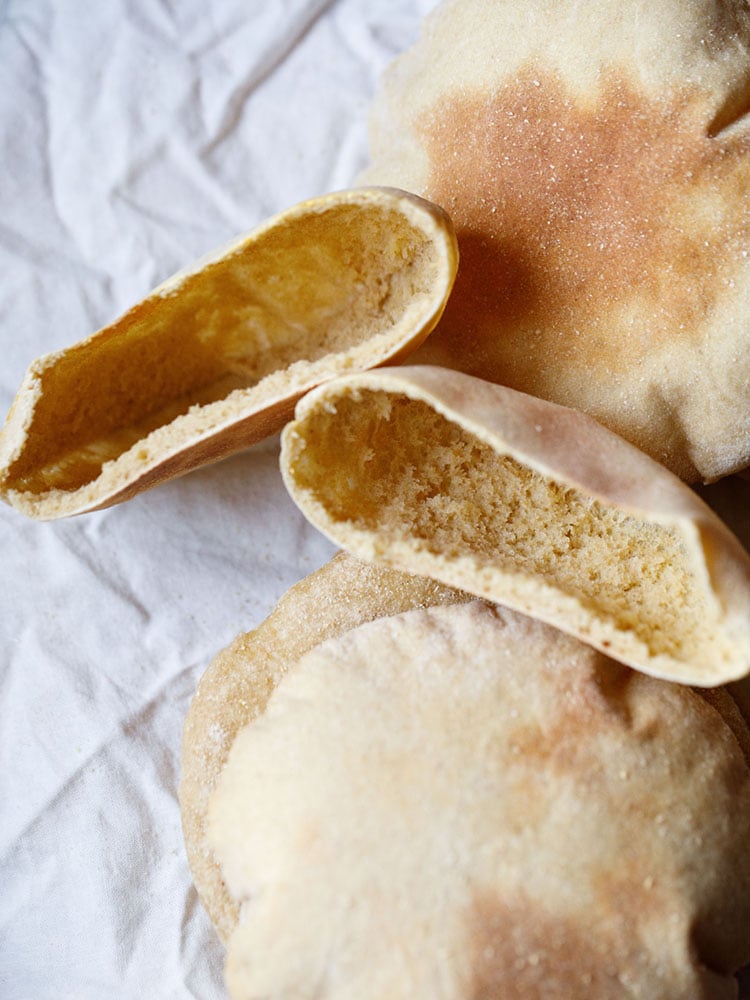
I have divided the step by step pictorial of pita bread recipe into 4 parts:
- Making the pita dough
- Assembling, shaping and rolling dough
- Baking pita bread in the oven
- Making pita bread on a skillet (stovetop method)
How to make Pita Bread Recipe
1: Making Pita Dough
1. Firstly take 1 teaspoon instant yeast and 1 pinch sugar in a stand mixer bowl or in any bowl in which you will knead the dough.
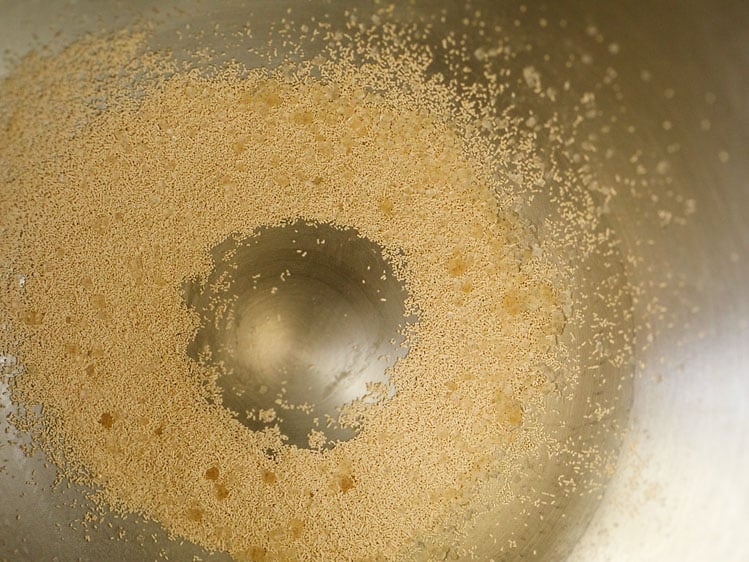
2. Pour 1 to 1.25 cups water and mix very well with a spoon. Depending on the quality of flour, you may add 1 to 1.25 cups water. Slightly coarse and grainy wheat flour will need 1.25 cups water.
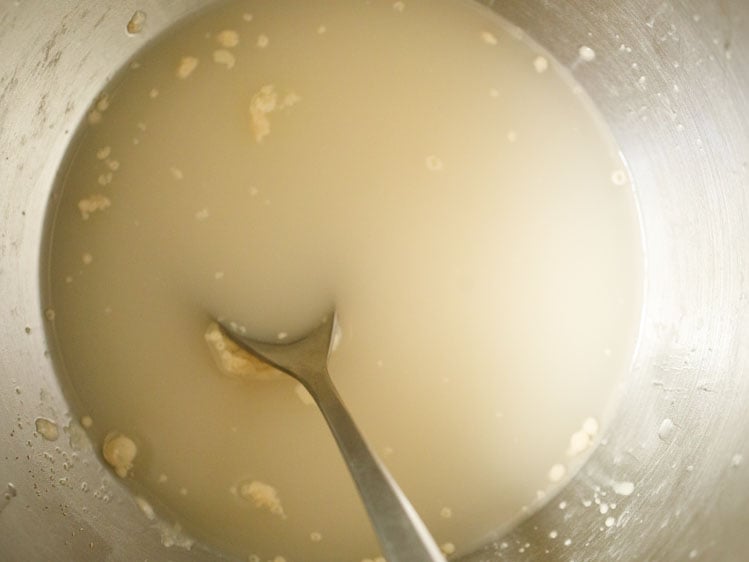
3. Add 3 cups whole wheat flour, 2 tablespoons extra virgin olive oil and 1 teaspoon salt.
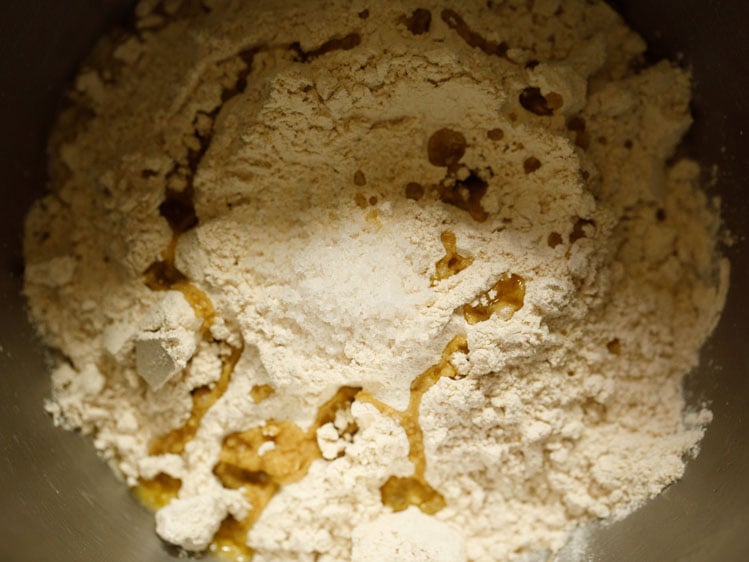
4. Mix everything with wooden spoon.
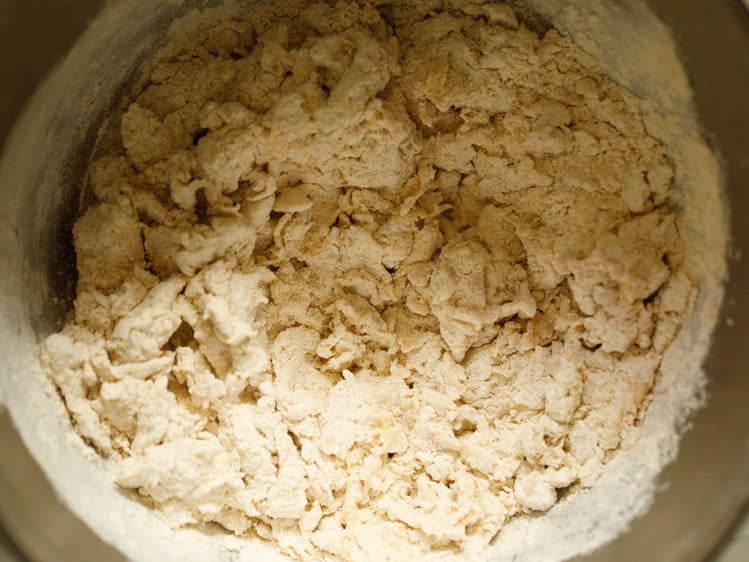
5. Then using the hook attachment begin to knead.
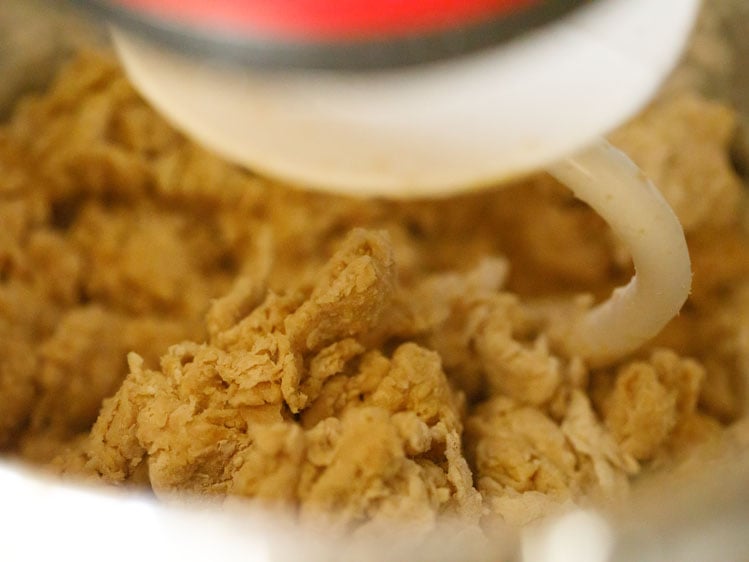
6. Initially, you will find the dough sticky, but continue to knead and you will see the extra water will be absorbed by the flour and stickiness will go away. If the dough looks very sticky even after kneading well, then add 3 to 4 tablespoons whole wheat flour. Mix and knead till smooth.
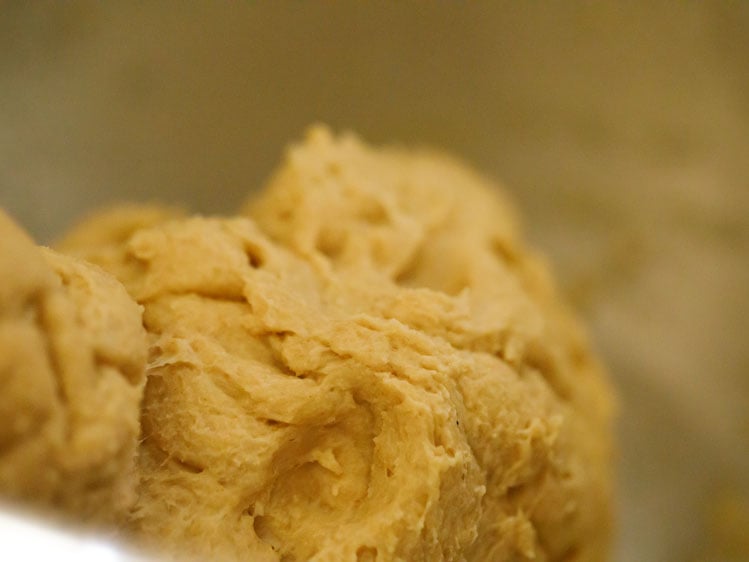
7. Knead to a smooth and soft dough.
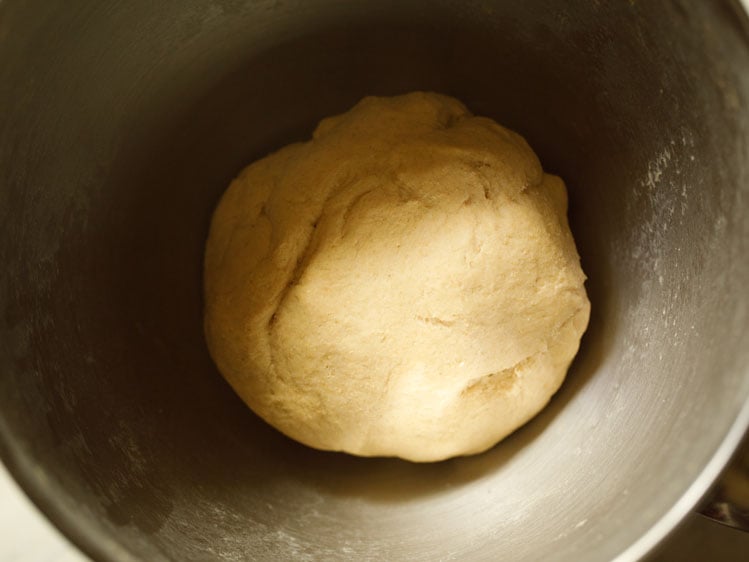
8. Rub or brush some water or olive oil all over the dough.
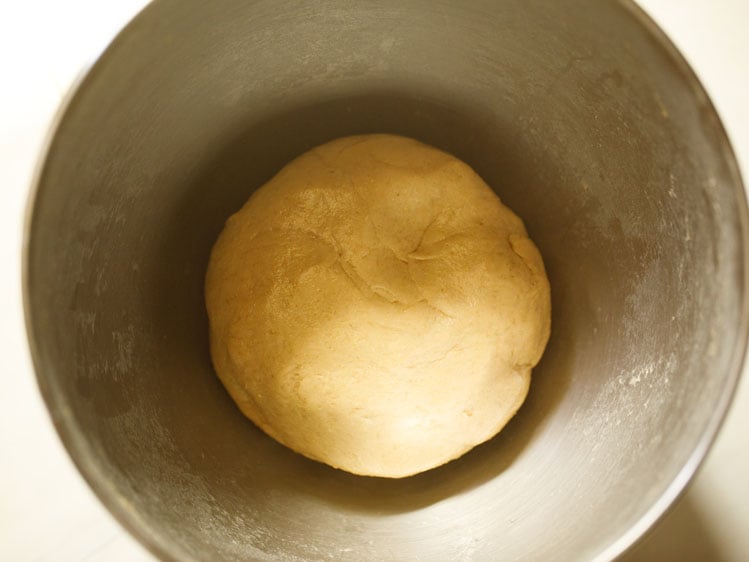
9. Keep it in the same bowl covered loosely with a kitchen towel for 45 minutes or 1 hour until the dough has doubled in volume and size.
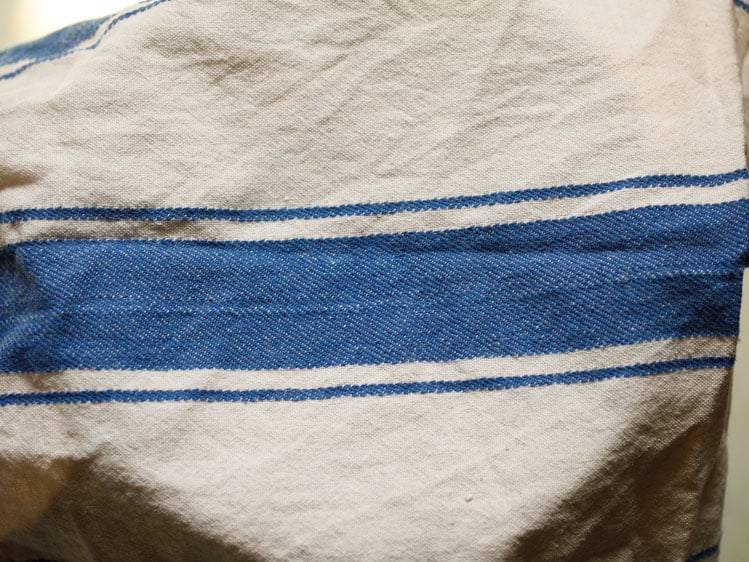
10. This is the photo of the dough after 1 hour.
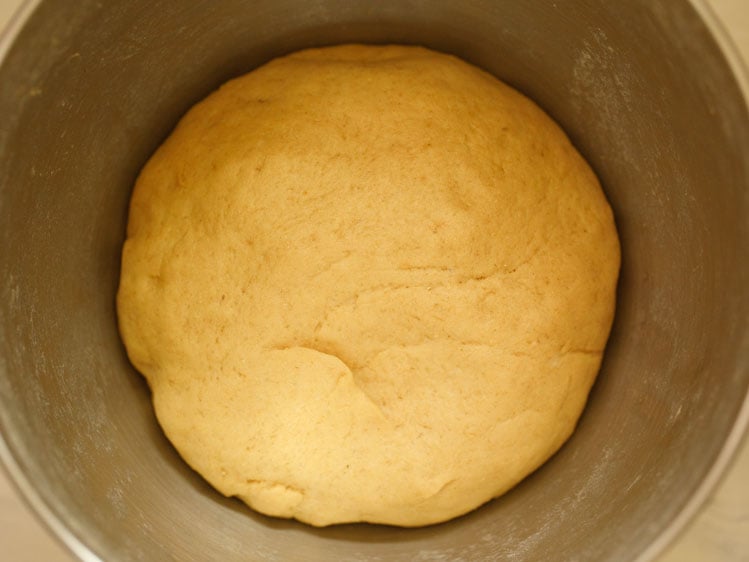
11. Deflate the dough gently and knead lightly.
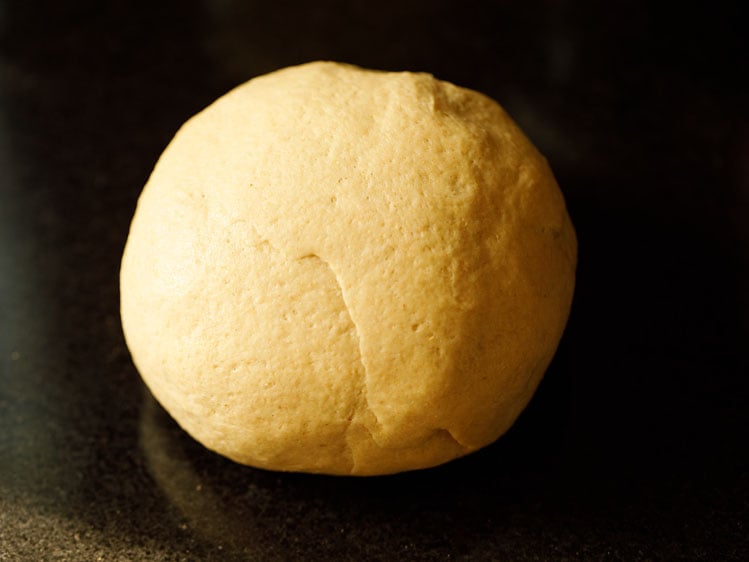
2. Assembling, shaping and rolling dough
12. Make into a log shape and cut equal portions from the dough. Keep these covered again for 10 minutes. Keep the dough balls covered all the time so that they don’t dry out.
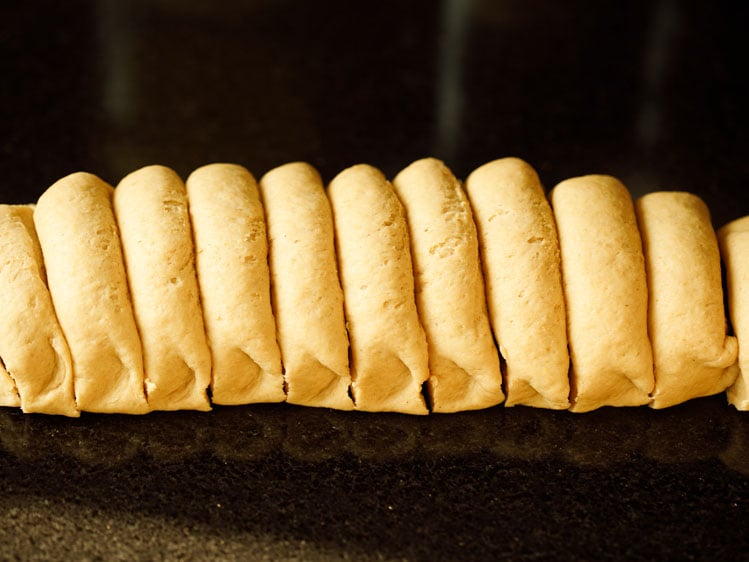
13. Meanwhile, place a baking tray in the oven. Then preheat oven at 230 degrees Celsius (446 degrees Fahrenheit) for 20 minutes.
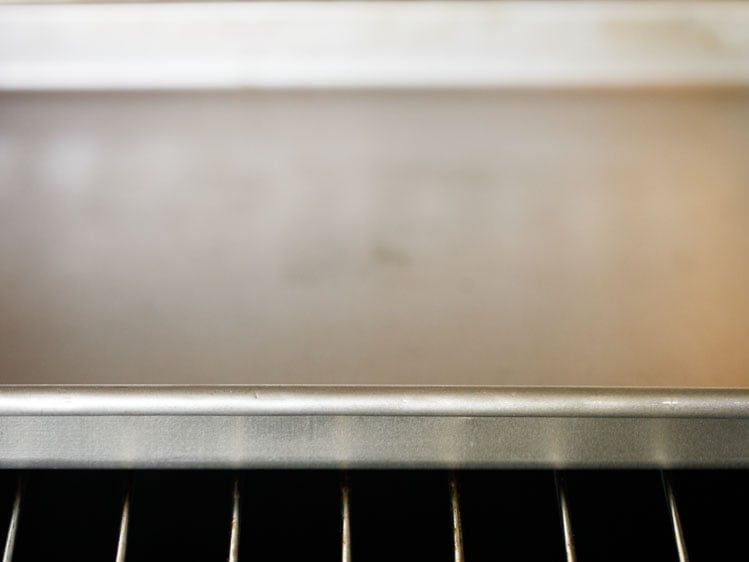
14. Take each dough portion and shape into a ball. Keep it on the work surface and sprinkle some flour on it as well as on the dough ball.
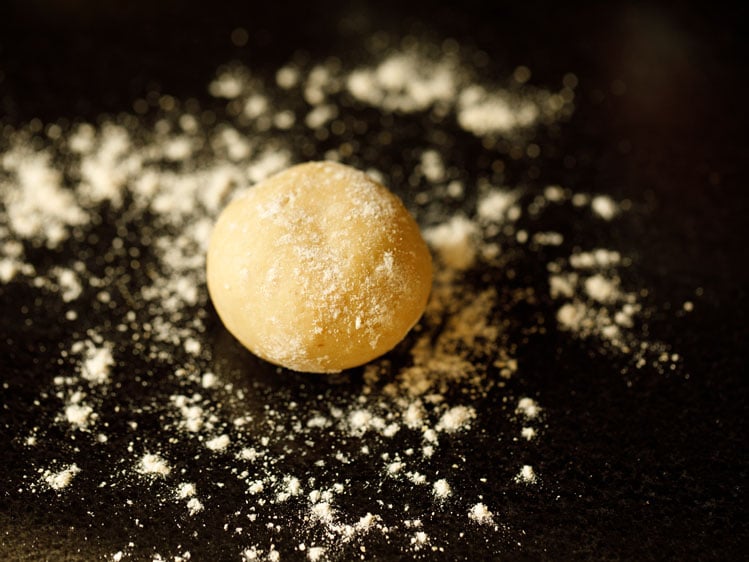
15. Roll evenly into a 5 or 6 inches round shape. You can also make them oval shaped if you want. For puffing it is very important to roll evenly. So do dust with slightly more flour. When you roll the dough with the rolling pin, the bread disc should also move clockwise while rolling.
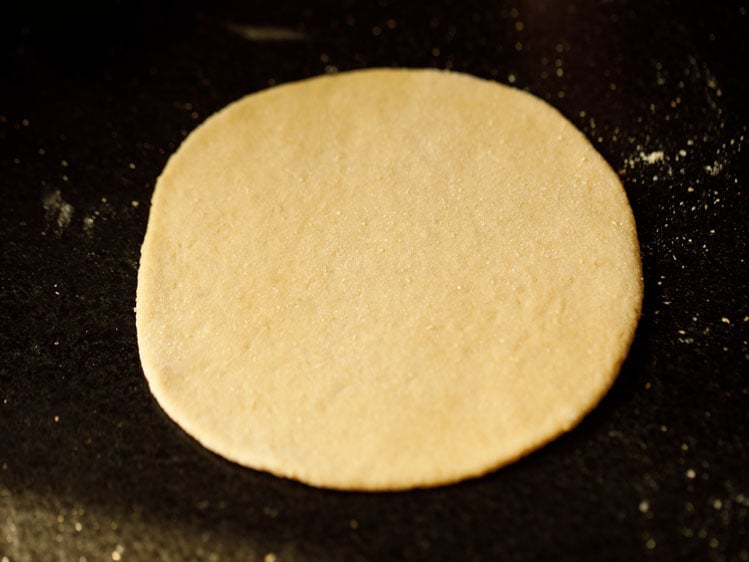
16. Keep the bread a little thick while rolling.
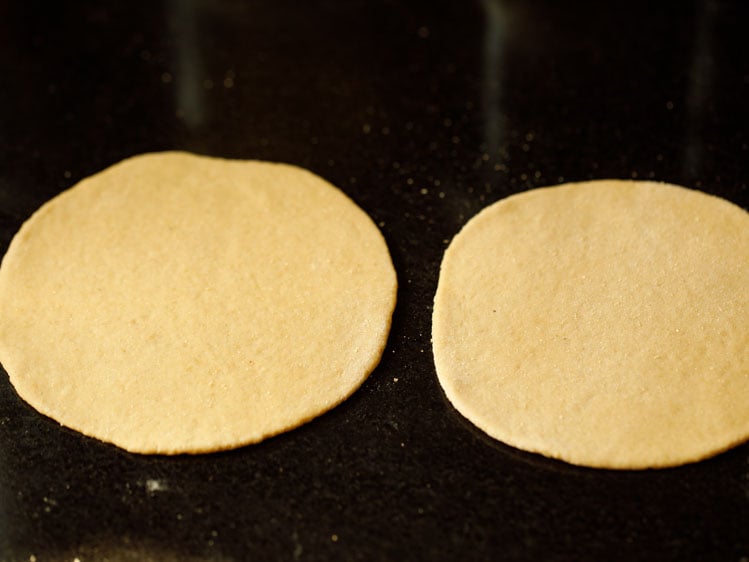
17. Keep these rolled discs covered loosely for 10 minutes.
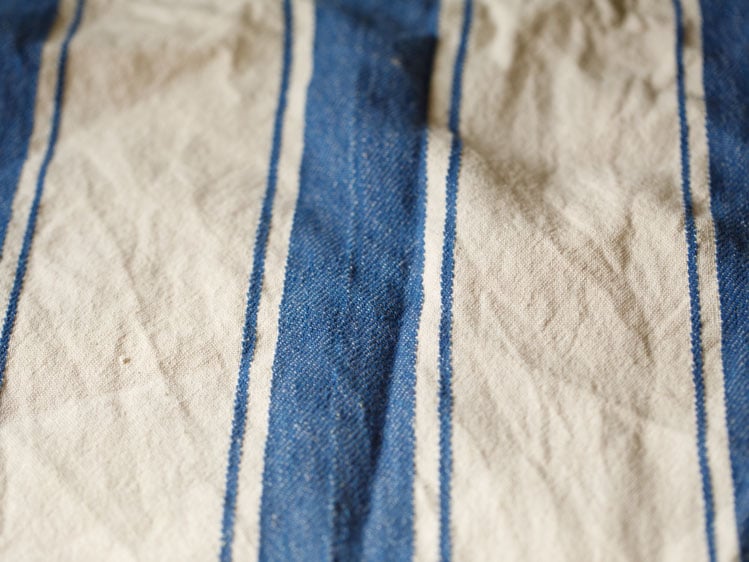
3. Baking pita bread in the oven
18. Carefully remove the baking tray from the oven with oven mittens. Sprinkle some flour and place the rolled discs in the tray. Use oven mittens when removing and placing the baking tray from the oven.
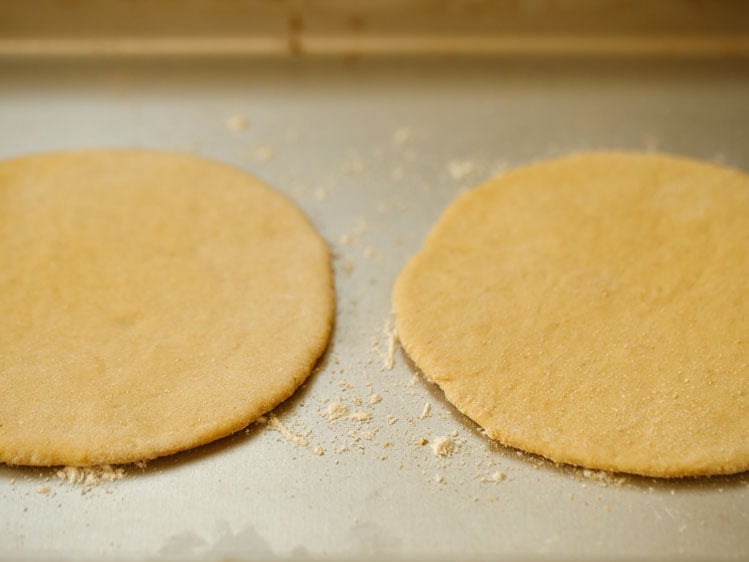
19. Place the tray back in the oven. Bake at 230 degrees C for 7 to 10 minutes. Mine took 7 minutes to cook and 1 minute to brown. Heat both the top and bottom heating rods of the oven.
If using a convection oven, then preheat as well as bake at 200 or 210 degrees Celsius (392 to 410 degrees Fahrenheit). Note that the baking time will vary from oven to oven. Look at those puffed up pita bread. Don’t they look good?
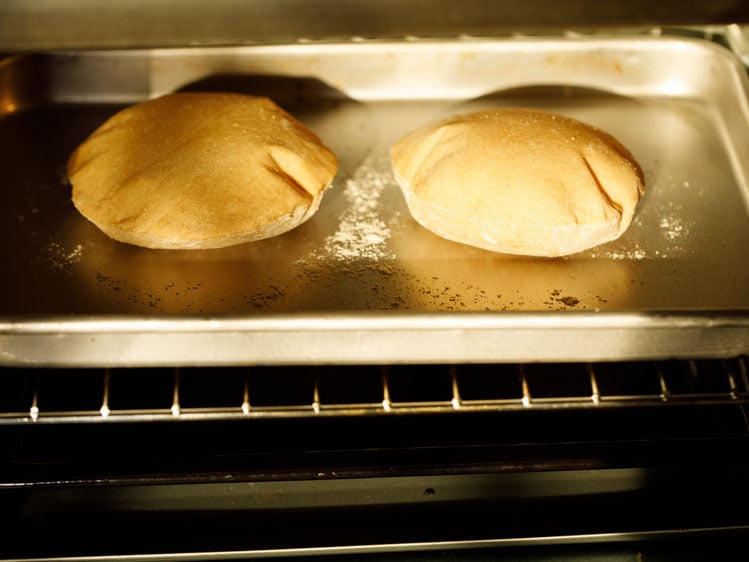
20. The pita bread will nicely puff up in the oven. Once they are puffed up and have a pale golden color, remove the tray. With a spatula remove the pita bread and place on a wired rack.
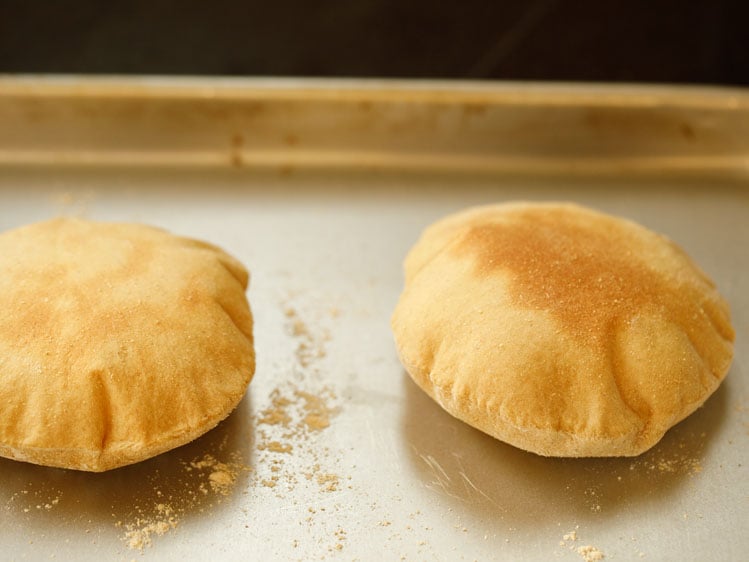
4: making pita bread on a skillet (stove-top method)
21. Heat a cast iron skillet or a frying pan on medium-high flame. Sprinkle some flour on the pan and it should get browned. This means that the pan is hot.
Use a heavy pan so that the pita bread does not get burnt from the bottom. Place the pita bread dough disc on the pan or skillet.
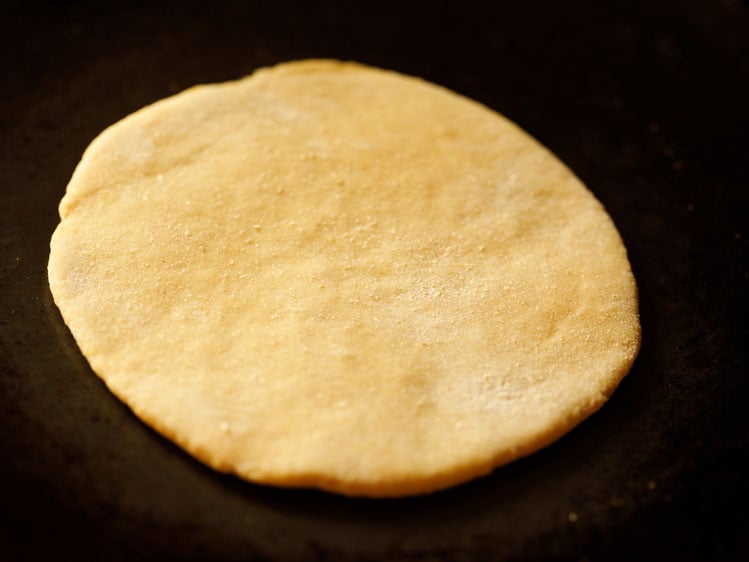
22. As soon as you keep the dough round on the pan you will see it getting puffed up.
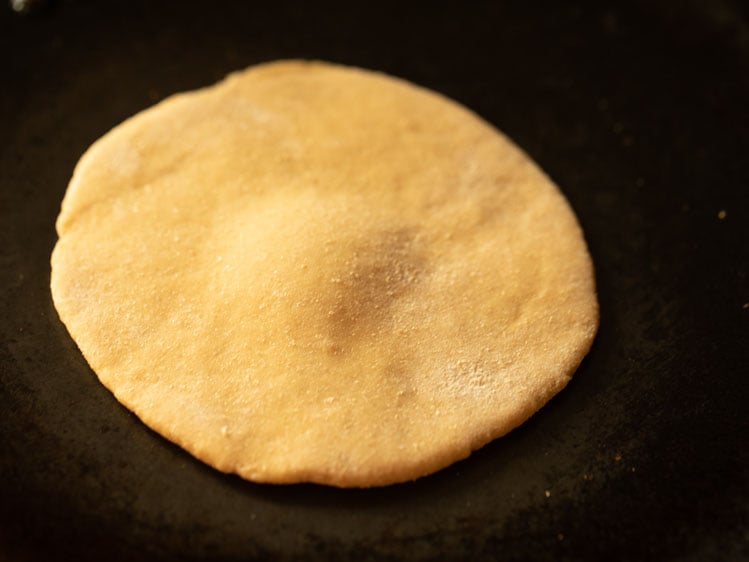
23. Cover with lid for 1 to 2 minutes.
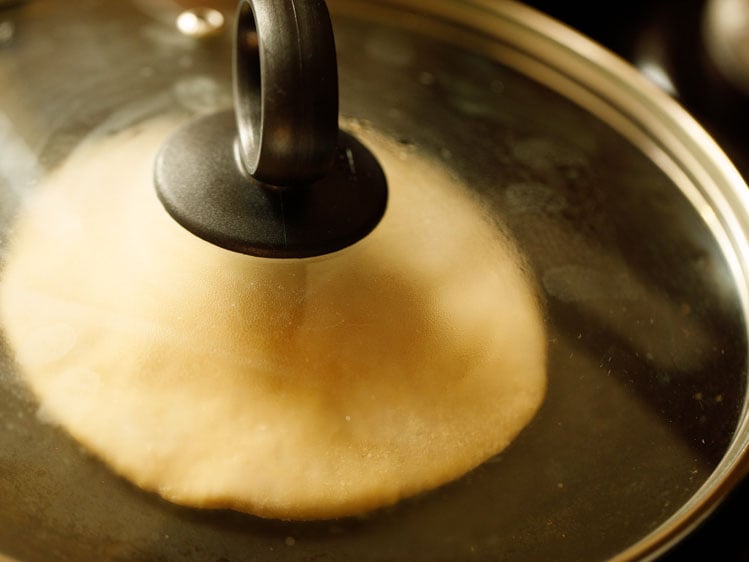
24. Here is the pita bread nicely puffed up.
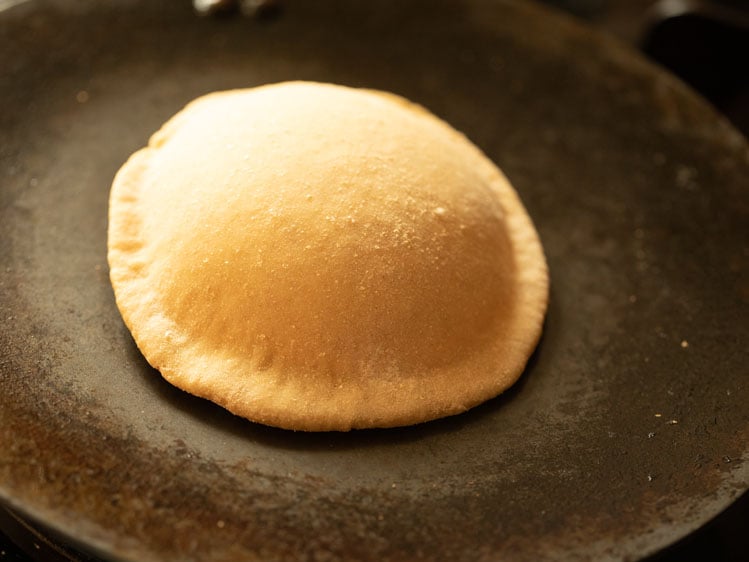
25. Turn over and cook for 1 to 2 minutes more till the pita bread is done and has brown spots appearing on both sides. Roast all pita breads this way. Alternatively, you could also make them the way we make Indian Flatbread – Roti (Phulka). After lightly cooking both sides on the skillet, place them on the fire and see them puff. Cook both sides.
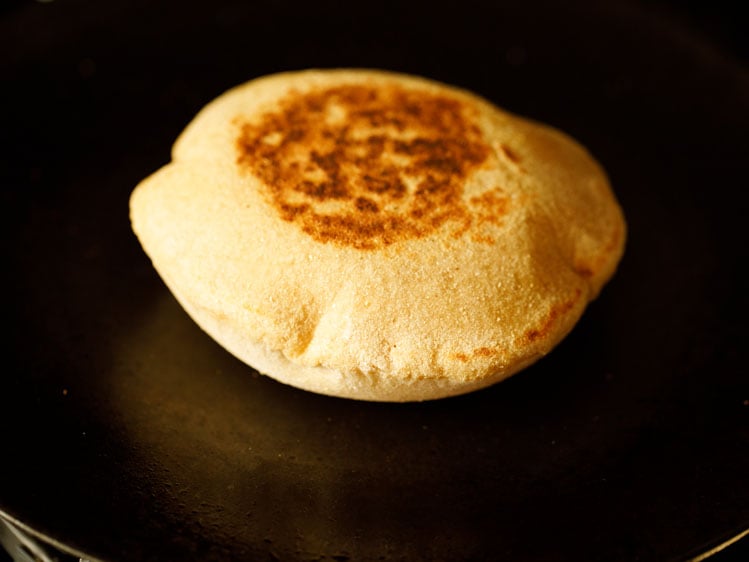
26. Stack pita bread and store them in a kitchen towel or bread box. Slice the pita bread into two and you will see the pockets.
Stuff the pockets with a filling of your choice and your pita sandwich is ready. You can make pita sandwiches with falafel, hummus, tahini and pickles or salad.
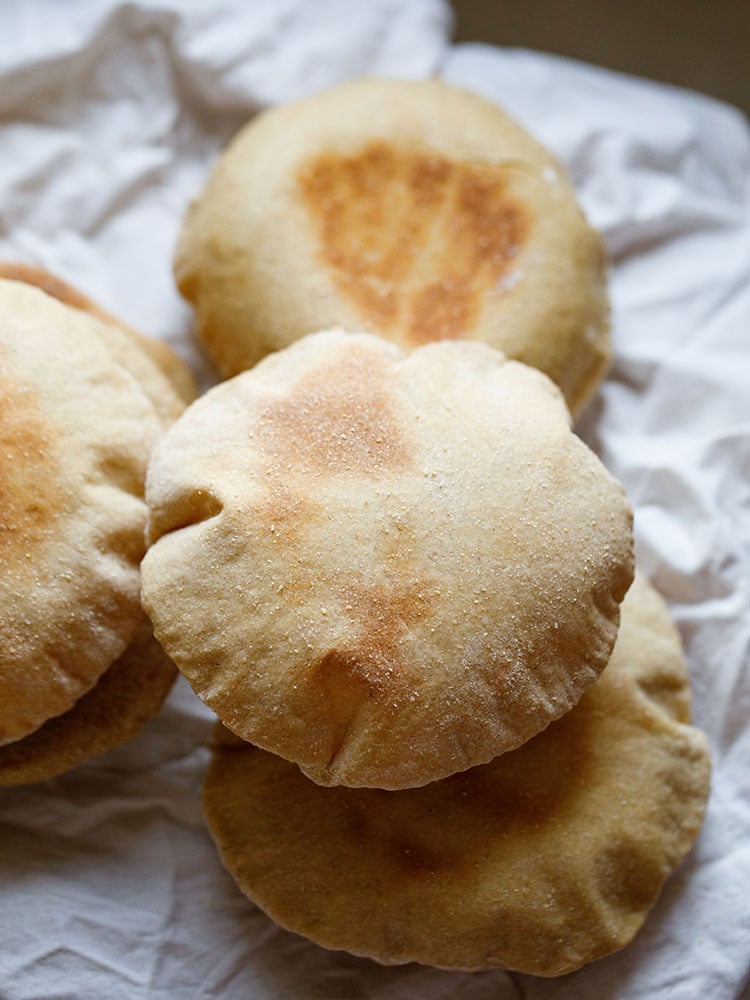
FAQs
I have listed some queries that readers have asked on this recipe post and my answers to them.
- Why my pita bread has no pockets?
There are a few things that if done correctly will puff the pita bread resulting in the pockets.- Water Content: The dough needs to have the perfect amount of water in it. Less percentage of water will make the dough hard or denser in texture and the pita bread won’t puff up.
- Texture of the Dough: The dough has to be kneaded really well. It should be soft and smooth.
- Rolling: If the dough is not rolled evenly, then the pita bread won’t puff. So there won’t be the pockets.
- Oven Temperature: The oven has to be very hot. Sometimes the oven isn’t actually reaching the temperature that it is set at. Then you will need to calibrate the oven. If the oven isn’t thoroughly preheated or hot enough then this cause the pita bread to stay flat and not puff leading to a denser bread.
- Why my pita bread is hard?
If you use dry active yeast then you need to activate it and proof it. If the activation and proofing are not done well, the dough won’t leaven resulting in hard bread. While activating, the water has to be lukewarm and not hot or cool. Note for instant yeast, you don’t need to proof or activate it and can use room temperature water - Can this recipe be halved or doubled?
Yes, you can easily scale the recipe. - Can I add all-purpose flour in the recipe?
Yes. But add about 1 cup of water while kneading. - Can we add milk instead of water?
Yes, you can add milk. You can use the same amount of milk as that of water – 1 to 1.25 cups. However, do note that depending on the quality of flour you may need to add less or more milk. - Can I add a combination of water and milk?
Yes you can do that - Can I add some yogurt (curd)?
Yes, you can add some yogurt in the dough and it will help in making the bread soft as well as give it a faint sour taste. - Why do some parts of the dough rise and some do not?
It is because the dough is not rolled evenly. Some parts will be thick and some parts will be thin resulting in an uneven thickness which makes the dough partially puff up at some spots. - Can we skip yeast and use baking soda?
You can but you will need to experiment with the recipe. - Can you freeze this homemade pita dough?
Yes, you can. - Can you freeze pita bread?
Absolutely! Freeze them in ziplock bags or in boxes. These stay good for months. - Can I use fresh yeast instead of instant yeast and in what quantity?
You can add 1 tablespoon fresh yeast. Note that you will need to activate and proof fresh yeast like dry active yeast. - Can I make the dough at night and leave it for leavening in the fridge ?
The dough has to be leavened outside at room temperature. Once the dough is doubled, then you can refrigerate it. - How to store pita bread?
Place them in a steel box or ziplock bags. Then you can either refrigerate or freeze the pita bread. - How to warm pita bread?
Heat a skillet or pan. Place the pita bread and cook it for 10 to 12 seconds on medium-heat till lightly hot on both sides.
Few More Bread Recipes
Please be sure to rate the recipe in the recipe card or leave a comment below if you have made it. For more vegetarian inspirations, Sign Up for my emails or follow me on Instagram, Youtube, Facebook, Pinterest or Twitter.
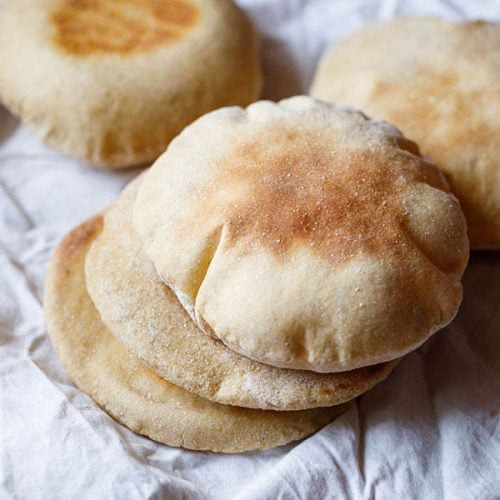
Pita Bread Recipe (Oven & Stovetop)
Ingredients
- 1 teaspoon instant yeast or 1.5 teaspoon dry active yeast (for dry active yeast check the notes below on activating and proofing it)
- 1 pinch raw sugar or white sugar
- 1 to 1.25 cups water or add as required
- 3 cups or 360 grams whole wheat flour
- 2 tablespoons extra virgin olive oil
- 1 teaspoon salt
Instructions
Preparing dough
- Firstly take the instant yeast and sugar in a stand mixer bowl or in any bowl in which you will knead the dough. Pour 1 to 1.25 cups water and mix very well with a spoon.
- Add 3 cups whole wheat flour, 2 tablespoons extra virgin olive oil and 1 teaspoon salt. Mix everything with wooden spoon.
- Then using the hook attachment of the stand mixer and begin to knead. Initially you will find the dough sticky, but continue to knead and you will see the extra water will be absorbed by the flour. Knead to a smooth and soft dough.
- Rub or brush some water or olive oil all over the dough. Keep it in the same bowl covered loosely with a kitchen towel for 45 minutes or 1 hour until the dough has doubled in volume and size.
Assembling, shaping and rolling dough
- Deflate the dough gently and knead lightly. Make into a log shape and cut equal portions from the dough. Keep these covered again for 10 minutes. Keep the dough balls covered all the time so that they don't dry out. You can even pinch portions from the dough and roll them into balls.
- Meanwhile place a baking tray in the oven. Then preheat oven at 230 degrees celsius for 20 minutes.
- Take each dough portion and shape into a ball. Keep it on the work surface and sprinkle some flour on it as well as on the dough ball. Roll evenly into a 5 or 6 inches round shape. You can also make them oval shaped if you want. Keep the bread a little thick while rolling.
- Keep these rolled discs covered loosely for 10 minutes more.
Oven method to make pita bread
- Carefully remove the tray with oven mittens. Sprinkle some flour and place the rolled discs on it. Use oven mittens when removing and placing the baking tray from the oven.
- Using oven mittens, place the tray back in the oven. Bake at 230 degrees C for 7 to 10 minutes. If using a convection oven, then preheat as well as bake at 200 or 210 degrees celsius. Note that the baking time will vary from oven to oven.
- The pita bread will nicely puff up in the oven. Once they are puffed up and have a pale golden color, remove the tray. With a spatula remove the pita bread and place on a wired rack.
Stovetop method to make pita bread
- Heat a cast iron skillet or a frying pan on medium-high flame. Sprinkle some flour on the pan and it should get browned. This means that the pan is hot. Use a heavy pan so that the pita bread does not burnt from the bottom. Place the pita bread round on the pan or skillet.
- Cover with lid for 1 to 2 minutes.
- Turn over and cook for 1 to 2 minutes more till the pita bread is done and has brown spots appearing on both sides. Roast all pita breads this way. Alternatively, you could also make them the way we make Indian Flatbread – Chapati (Phulka). After lightly cooking both sides, place them on the fire and see them puff. Cook both sides.
- Stack pita bread and store them in a kitchen towel or bread box. Just slice the pita bread into two. You will see the pockets. Stuff the pockets with a filling of your choice and your pita sandwich is ready.
Video
Notes
- Pita Bread Dough: The dough needs to have the perfect amount of water in it. Less percentage of water will make the dough hard or denser in texture and the pita bread won’t puff up. Depending on the quality and type of flour used, you can add less or more water. The dough has to be kneaded really well. It should be soft and smooth.
- Kneading with hands: The pita bread dough can be easily kneaded with hands. Knead the dough very well for about 10 to 12 minutes.
- Rolling the dough discs: If the dough is not rolled evenly, then the pita bread won’t puff. So there won’t be the pockets or you may have the pita bread puffing on some spots and remaining flat on others.
- Oven Heating: The oven has to be very hot. Sometimes the oven isn’t actually reaching the temperature that it is set at. Then you will need to calibrate the oven. If the oven isn’t thoroughly preheated or hot enough then this cause the pita bread to stay flat and not puff.
- Using dry active yeast: If you use dry active yeast then you need to activate it and proof it. If the activation and proofing is not done well, the dough won’t leaven resulting in hard bread. While activating, the water has to be lukewarm and not hot or cool. Note for instant yeast, you don’t need to proof or activate it and can use room temperature water
- Scaling: You can easily halve or double the recipe.
- Storing Pita Bread: Place them in a steel box or ziplock bags. Then you can either refrigerate or freeze the pita bread.
- Reheating: To warm or reheat pita bread, heat a skillet or pan. Place the pita bread and cook it for 10 to 12 seconds on medium-heat till lightly hot on both sides.
- Substitutes:
- Whole wheat flour: Replace with all purpose flour.
- Water: Can be replaced with milk (dairy or vegan).
- Instant yeast: You can use 2 teaspoons of dry active yeast and 1 tablespoon fresh yeast instead. Both these yeast will need to be activated in lukewarm water with sugar before adding to the flour.
Nutrition Info (Approximate Values)
This Pita Bread recipe from the archives was first published on July 2012. It has been updated on November 2024.
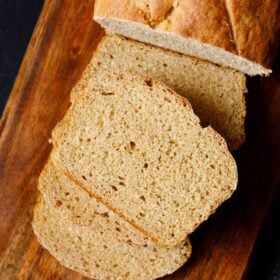
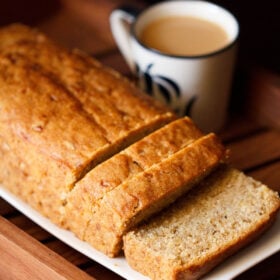

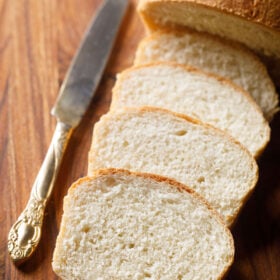








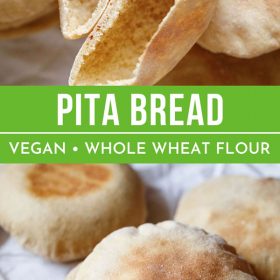
Dear Dassana, Thank you for sharing such an wonderful recipe. However, When I prepared the dough It was more darker than pics u have posted here, more wheatish color. Also It had a strong odor of Yeast. Can you help me out ?
i think the color depends on the quality of wheat flour. the yeast odor also depends on the type and quality of yeast. i would suggest to buy a good brand of yeast.
I followed the recipe, made 6 balls, rolled and let rise 10 minutes. one puffed up and the other 5 stayed flat. Why do you think this happened?
not sure why. may be some thing to do with the oven temperature…. just guessing.
I check your site almost everyday but never actually left a comment. I love your recipes and photos and what I like most is that you try to use ingredients that are found in everyone’s kitchen. So I don’t have to go hunting for some fancy and exotic items 🙂
I’m hoping to make these pita breads this weekend and I have a question. Since you tried the oven and stove versions both, which one do you think turned out better?
thanks for commenting preeti. both are good. but the stove top will have brown burnt marks that is not usually there in pita breads. for an authentic version, you can try the oven method. if in a mood for experimentation, then try the stove top method. i gave the stove top version since many people do not have or use oven in india and they may like to try pita bread at home.
These pitas look great! I have been searching for the perfect pita recipe and am going to try this next! Mine turn out hard and crispy with no pocket, but I’m not giving up 🙂
thanks and do try the pita breads.
Hi, I have a query. Is it ok to prepare the dough and leave it overnight? Considering Bangalore chill weather at night at present and room temperature, would this be alright?
Thanks, Shreya
no. don’t leave the dough overnight. i suggest to increase the leavening time to 3 or 4 hours. other suggestion is to keep the dough in a warm place. wrap the bowl with some warm napkins and place in a warm corner. you can also keep the bowl near a window where you get sunlight.
Hi Dassana,
Tried the pita bread,hummus and falafel from your blog.It came out good,though a bit bland for my taste. This was the first time I tried a middle eastern dish and was happy bout it. Will definitely try it again.Thank you.
all of them are not at all spicy ashwini. however the falafel can be spiced and indianised. next time you can add some more chilies or red chili powder to the falafel.
Can I use All-Purpose flour (white)/ Maida
instead of wheat four ?
zaynab, yes you can use all purpose flour to make pita bread but then less water be needed to knead it.
Dassena,
Pita bread is a new concept for me. Its looking great. Appreciate the effort for making this recipe look amazing.
Thanks for the wonderful recipe. I’ve decided to experiment today itself. I’ll try both modes oven and stove.
Nayeem
welcome nayeem. would like to hear your feedback about oven and stove method.
Hi Dassana,
I tried doing pita bread as per your recipe but dassana i am dissappointed by it as the bread did not fluff. I did as per your recipe with the yeast as frothy as mentioned by you.
I am very dissappointed. Do let me know what shall i do.
Thanks,
Usha K Iyer
which flour you used? since they did not puff up, i think the dough must have been hard. the dough has to be soft and smooth. also we have so many varieties of flour, that each flour has different water absorbing capacities. so the recipe is just like a guideline and the water has to be added accordingly. did the yeast froth too and which yeast did you add.
2 things that affect artisan breads from rising correctly which might affect your pitas, make sure the yeast is still active (when you let it sit in the warm water for a while, it should bubbleup) and, you may need a thermometer in the oven to make sure it’s the correct temperature. Almost all ovens need recalibrating at some point (and the oven isn’t actually reaching the temperature it is set at). If the oven isn’t thoroughly preheated or hot enough, that will frequently cause bread to not get the rise it should and can cause a denser, harder bread. Maybe this will help someone.
thanks laura for your suggestions and tips. i am sure it will help the readers.
Hi Dassana,
I actually tried doing pita bread but it did not sem to fluff. I got the yeast as it has to be frothy with bubbles but still the bread did not come so good instead they came very stiff as khakara. Please do write to me as to how can i get it done fluffy. I am really dissappointed at this time.
Thanks,
Usha K Iyer
have replied to you usha. the dough has to be like a chapati dough – soft and smooth. also the oven has to be pre heated for at least 15-20 minutes. you can try making next time. don’t be disappointed. many things can go wrong when baking. happens with me too. we all learn and keep on learning 🙂
Mine just didn’t puff up 🙁 I followed everything in the recipe but the yeast – instead of active dry one, I used 17 g of fresh one. Any suggestions?
hi ana. i just checked on the yeast conversion tool and the amount of yeast you have used is more. for 1/2 tbsp of active dry yeast which is 4.25 gms yeast… the conversion would be 8.5 gms of fresh yeast. 17 gms is too much of yeast. may be due to this, the quality of the dough must have got affected.
Thank you, Dassana, you were right! I made them again today and they turned out just fine. 😀
thanks ana
Thank you for this useful recipe, i tried it and it worked great, mine dont look as good as yours but i´m sure it takes practice, thanks a lot
welcome valentina.
Hi dassana,
First of all…thumbs up for such wonderful blog. I have tried lots of recipies from your blog from cakes to breads..idli to methi matar malai..needless to say pita and hummus…all turned out very well. I have a LG convection which i have for last 5 years but aftr a few failures was too demotivatwd to baked in it..your commentsinspired me try pita in convection once again…but no luck this time either. Though otg pita were just perfect. The convection ones dint puff and also dont brown.. Anusuggestions ? Though the temperature same
thanks shilpa. was the oven preheated enough. while baking in microwave at the convection mode, the oven has to be preheated well. preheat for about 8-10 mins. i have made pita breads as well as regular breads, rolls and buns in both OTG as well as in the convection mode of microwave oven. never had any issues, except for the quick browning in the microwave. pita breads are usually not browned.
Thanks Dassana,
I think preheating was a probelm. Since i just preheated for about 4-5 mins. Will try again ..Thank you fo your advice. I am going to try you orange cake tonight in the convection.
alright shilpa.
Finally my attempt at baking in the convection turned out to be a success. I followed your instructions to the T for the orange cake and like all your recipies this one was also a big hit.
Thank You.
thanks shilpa for trying this orange cake recipe and also writing a positive feedback.
Hi! I am making Pita breads today for the very first time following your recipe 🙂
I have a question – For many days can a cooked pita bread survive ? Like a regular bread ?? Or it should be consumed within the same day ???
Also i used instant dried yeast , mixed it in warm water with a pinch of sugar as mentioned but there no bubbles at all 🙁 Any idea why ? It a fresh opened yeast packet.
PS : I love your blog <3 I follow it regularly and whenever I am trying something new, yours is the first blog I look up to 🙂
thanks anuradha.
hi anuradha. if you keep the pita bread packed in a cling film or in a box in the fridge, it stays well for a week upto 10 days. its just like regular bread. if you keep out for more than day then like regular bread, they will get spoiled.
you have to give a time of atleast 10 mins to see all the yeast bubbled up. if you don’t see any bubbles after 10 or 15 mins, the water must be not warm enough for the yeast to get activated or the water is hot. since its a freshly opened yeast packet, i assume the yeast must alright.
The bread came out ok… they didn’t fluff up as yours but still managed to make pockets … I guess the problem was with the yeast … there were no bubbles, the water was warm but I guess it requires even warmer water . Will try again.
Thank you 🙂
if the yeast does not bubble up, then its best to throw away the solution and make a fresh one. all the best for the next time.
Hi
Can these be frozen for future use? How long can they be frozen for?
before baking, the leavened dough can be frozen. i would suggest to keep only 3-4 days. after baking, pita breads are best consumed fresh. you can refrigerate the pita breads for 2-3 days.